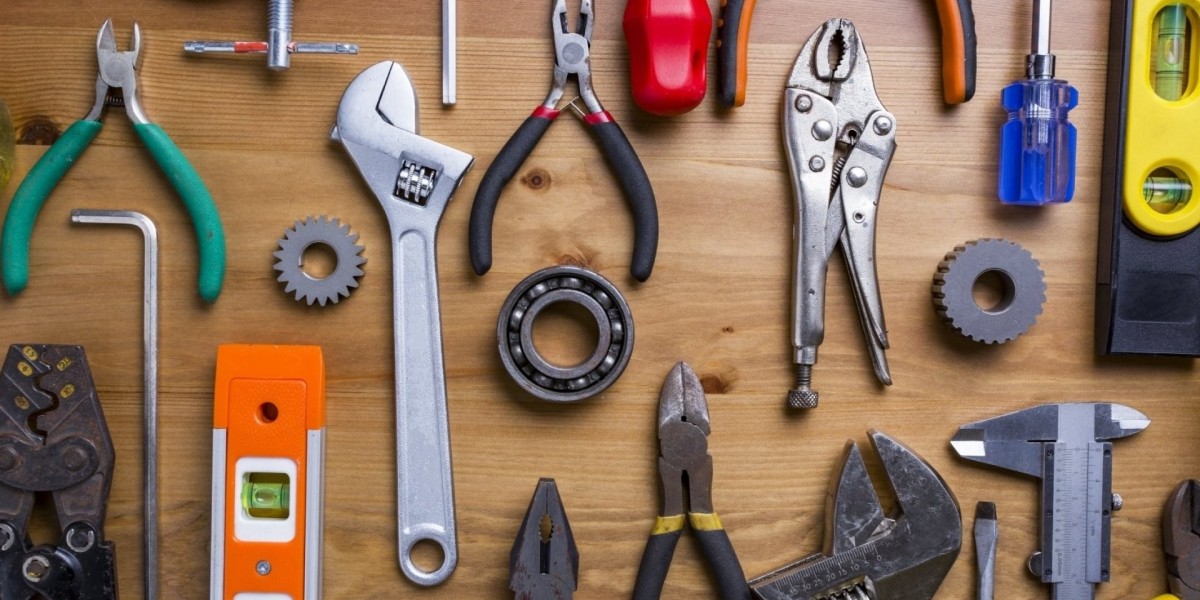The Evolution of Mechanical Hand Tools: From Traditional to Modern Designs
Mechanical hand tools have played a fundamental role in human civilization, enabling craftsmanship, construction, and innovation throughout history. From primitive stone implements to sophisticated, ergonomically designed power tools, the evolution of hand tools reflects technological advancements and the ever-changing demands of industries and everyday users. This article explores the transformation of mechanical hand tools from their traditional origins to modern designs, highlighting key innovations and their impact on efficiency, safety, and usability.
The Origins of Mechanical Hand Tools
According to a Mechanical Hand Tools Market report, the industry is expected to grow significantly in the coming years.
The earliest hand tools date back to the Stone Age, when humans used sharpened stones, bones, and wooden sticks for cutting, hammering, and scraping. As civilizations progressed, metalworking techniques led to the development of more durable tools made from copper, bronze, and eventually iron and steel. Ancient Egyptians, Greeks, and Romans refined tool-making techniques, introducing chisels, saws, hammers, and tongs that closely resemble their modern counterparts.
During the Middle Ages, blacksmithing became a crucial trade, leading to the production of specialized hand tools for construction, farming, and warfare. Innovations such as the screw-based vise and early forms of pliers and wrenches emerged, paving the way for greater precision and mechanical advantage.
Industrial Revolution: A Turning Point
The Industrial Revolution in the 18th and 19th centuries marked a significant turning point in the evolution of hand tools. Mass production techniques and advancements in metallurgy led to the widespread availability of high-quality, affordable tools. Factories began producing standardized hammers, screwdrivers, wrenches, and pliers, making them more accessible to both professionals and general consumers.
During this period, tool design also improved, with ergonomic handles, interchangeable parts, and refined mechanisms that enhanced functionality. Ratcheting wrenches and precision screwdrivers became commonplace, allowing for greater efficiency in mechanical work.
The Rise of Power Tools and Automation
The 20th century saw the introduction of power tools, revolutionizing the mechanical hand tool industry. The invention of electric drills, powered saws, and pneumatic tools significantly increased productivity while reducing manual effort. Companies such as Black & Decker and Bosch pioneered electric tool manufacturing, leading to a new era of high-performance hand tools.
Cordless technology, introduced in the latter half of the century, further enhanced convenience and mobility. Lithium-ion batteries replaced older power sources, enabling longer operational times and reducing dependency on power outlets. Additionally, advancements in materials such as lightweight alloys and high-impact plastics improved the durability and usability of modern hand tools.
Modern Innovations and Smart Tools
Today, mechanical hand tools continue to evolve with the integration of smart technology and precision engineering. Digital torque wrenches, laser-guided measuring tools, and Bluetooth-enabled diagnostic devices are examples of how hand tools are becoming more intelligent and efficient. The incorporation of sensors and real-time data collection allows professionals to achieve greater accuracy and consistency in their work.
Ergonomic designs have also advanced significantly, with manufacturers focusing on reducing strain and fatigue. Anti-vibration handles, non-slip grips, and adaptive tool designs ensure safety and comfort for prolonged use.
Sustainability and the Future of Hand Tools
With increasing environmental awareness, manufacturers are exploring sustainable materials and energy-efficient designs. Recyclable tool components, biodegradable lubricants, and eco-friendly packaging are becoming industry standards. The future of mechanical hand tools lies in further automation, AI-driven diagnostics, and even 3D-printed custom tools tailored to specific tasks.
Conclusion
The evolution of mechanical hand tools from primitive stone implements to modern, high-tech devices showcases humanity’s relentless pursuit of efficiency and innovation. As technology continues to advance, hand tools will become even more specialized, intuitive, and sustainable, ensuring they remain indispensable in various industries and everyday applications. Whether traditional or modern, these tools will always be essential to craftsmanship and industrial progress.






